Psychology Part III: A Social History of Female Faculty at Berkeley
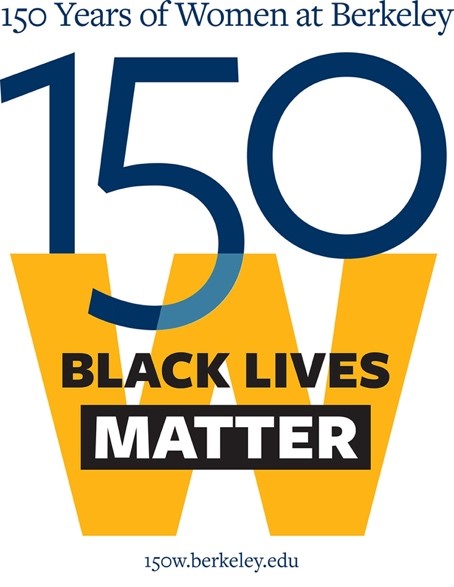
October 3, 2020 marked the 150th anniversary of the University of California Regents’ unanimous approval of a resolution in 1870 by Regent Samuel F. Butterworth: “That young ladies be admitted into the University on equal terms in all respects with young men.” The first women were admitted as students to Berkeley in 1872, four years after the university’s opening in 1868. In celebration of 150 Years of Women at Berkeley, a website was created to showcase essays, interviews, and talks from across the campus, demonstrating the breadth and depth of women’s contributions to Berkeley, their fields, and to the larger world. These materials will be housed in the UC Berkeley Library’s Digital Collections.
We chose the Black Lives Matter logo to underscore that women’s history in our Psychology Department has been, until recently, largely one of white female scholars and to emphasize the urgent need for greater ethnic diversity in the faculty as well as in the student ranks. As one example, the first black female (Diane Howell) awarded a Ph.D. in psychology at Berkeley was in 1978 and our first women of color faculty appointment occurred in 2000 (Serena Chen), almost 80 years after the department was created.
The Psychology Department at Berkeley joined this campus tribute with a three-part series. Part I highlights 10 trailblazing women from psychology who attained notable “firsts.” Part II celebrates our female Ph.D. graduates in psychology and captures the diverse and exceptional careers of a sample of 10 of our alumnae. Accompanying these essays, two symposia were held to honor this history. The Psychology Department hosted two Ph.D. alumnae, Laura Helmuth, Editor-in-Chief, Scientific American, and Sybil Madison, Deputy Mayor for Health and Human Services in Chicago, in a virtual colloquium, to share their careers as changemakers on the frontlines (April 2021). In addition, the Women’s Faculty Club featured an online remembrance session on the lives of two pioneers who fought for gender equity at Berkeley, Professors Susan Ervin-Tripp (Psychology) and Elizabeth Scott (Statistics), April 2021.
This essay, which constitutes Part III of the series, examines the social history of the female faculty in psychology at Berkeley, exploring who they were, how they fared, and what they contributed during four different eras. Our primary focus here is on the women who became tenure-track faculty in the professor series. These women were hired for their research, shaped the direction of the department through their votes on hiring and tenure, and were granted membership in the Academic Senate, the university governing body. Senate faculty positions also enabled greater job security through tenure, salary, and benefits. Nonetheless, as we will cover below, during the period from 1924 through 1971, no new female tenure-track faculty joined the department. Accordingly, we discuss some of the incredibly productive women who were appointed without these senate faculty privileges—in roles as lecturers, instructors, and researchers—during this long period.
One of our earliest female faculty members, Professor Jean Macfarlane, wrote two histories of the Berkeley Psychology Department and encouraged a third one. The first one, “Preliminary Notes on the History of the Psychological Department, University of California, 1896-1951” was written on the occasion of Professor Warner Brown's 70th birthday for a book of appreciation (courtesy of the Bridgman Archives, Wellcome Library, London). Professor Macfarlane also wrote a brief history “Psychology” which traces the field’s presence at Berkeley from 1888-1961 and supervised an extensive honors thesis written by Joan D. Grold in 1961 about that same time period entitled “A History of the University of California Psychology Department at Berkeley.”
Of interest, no mention was made in the narratives of Macfarlane or Grold of the scarce representation of women during this historical period. Also, it should be noted no full departmental history (of males or females) has been written beyond 1961—now 60 years ago.
In this essay, our emphasis is fueled by the early underrepresentation of woman faculty, until recent times. We frame the story around major turning points and contextual factors—examining women’s accomplishments, obstacles faced, and policies in place. Given the broad span of years and that less is known about the periods in which women faculty were at their lowest levels, we focus in greater depth on the earlier years.
In four sections, we cover (1) the first-generation women faculty, (2) the 47 dry years of no new female faculty hires, yet with women psychologists in the shadows, (3) the academic pioneers of the 1970’s, and (4) the late 20th and early 21st century women faculty. This essay is just a beginning. Clearly more work is needed to fully capture the intellectual contributions of these earliest women and of the remarkable female faculty hired once affirmative action was put in place and beyond.
It is well known that women have been largely omitted from the history of psychology, as was also common in so many fields. Vigorous efforts have been made to retrieve their untold lives and to chart their role in shaping psychological science and its discoveries. We stand on the shoulders of those who came before us. By excavating women’s history within their time periods and institutional contexts, we can see how far we have come. Through this work, we hope to stimulate dialogue about an unfinished agenda—despite advances made—that would promote greater equity and a more powerful voice for women in shaping the university as well as our discipline.
THE FIRST GENERATION OF FEMALE FACULTY IN PSYCHOLOGY
Psychology at Berkeley had its roots in the late 19th century, within the Philosophy Department, with the first course on the subject taught in 1888 by philosopher George Howison and the first four doctorates awarded to women.
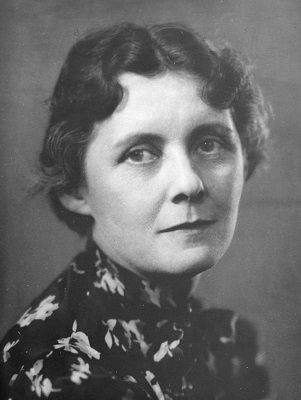 In 1915, Olga Louise Bridgman (1886-1974) became the first female faculty member in psychology, housed within the Philosophy Department. In that year, she had also earned psychology’s first Ph.D. under the direction of Howison’s former student, George Malcolm Stratton. With an M.D. from the University of Michigan and her Berkeley doctorate, Bridgman was immediately appointed as an instructor in abnormal psychology and pediatrics, dividing her time between the UC Medical School in San Francisco (where she started a psychiatric clinic) and the Berkeley campus. Appointed to the professor series, she rose through the faculty ranks, achieved tenure, and after four decades of service, became Professor Emerita in 1956.
In 1915, Olga Louise Bridgman (1886-1974) became the first female faculty member in psychology, housed within the Philosophy Department. In that year, she had also earned psychology’s first Ph.D. under the direction of Howison’s former student, George Malcolm Stratton. With an M.D. from the University of Michigan and her Berkeley doctorate, Bridgman was immediately appointed as an instructor in abnormal psychology and pediatrics, dividing her time between the UC Medical School in San Francisco (where she started a psychiatric clinic) and the Berkeley campus. Appointed to the professor series, she rose through the faculty ranks, achieved tenure, and after four decades of service, became Professor Emerita in 1956.
Bridgman (by then an associate professor) was one of four faculty, along with George Malcolm Stratton [appointed Chair], Warner Brown, and Edward Chace Tolman, to establish an independent Department of Psychology at Berkeley in 1922. This ended a 34-year embryonic period which Jean Walker Macfarlane noted in her 1961 history essay, was accomplished only after “severe labor pains.”
Alongside research contributions to mental deficiency and child psychiatry— informed by clinical cases and the scientific method—Professor Bridgman’s achievements were among the earliest examples of clinical psychology in an American university. Bridgman was also known as a gifted teacher, as a consultant to clinics, well-baby centers, and juvenile courts, and as a member of numerous state and national boards, including the Orthopsychiatric Association.
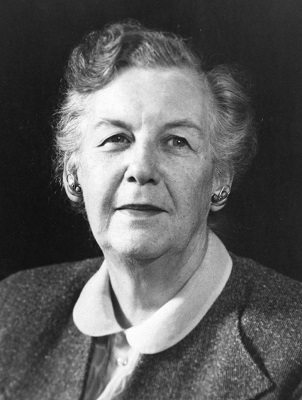 In 1924, Jean Walker Macfarlane (1894-1989) became the second female faculty appointment in psychology. Having received her undergraduate degree at Berkeley in 1917, she earned the second psychology doctorate in 1922, also under Stratton. After postdoctoral training in clinical psychology in Boston and an appointment at the UC Medical School in San Francisco, Macfarlane returned to Berkeley’s Psychology Department, first as an instructor, then as an assistant professor in 1929. After advancing through the faculty ranks and earning tenure, she became Professor Emerita in 1961, after almost four decades of service. She also held an appointment as a Research Associate in the newly established Institute of Child Welfare (now the Institute of Human Development).
In 1924, Jean Walker Macfarlane (1894-1989) became the second female faculty appointment in psychology. Having received her undergraduate degree at Berkeley in 1917, she earned the second psychology doctorate in 1922, also under Stratton. After postdoctoral training in clinical psychology in Boston and an appointment at the UC Medical School in San Francisco, Macfarlane returned to Berkeley’s Psychology Department, first as an instructor, then as an assistant professor in 1929. After advancing through the faculty ranks and earning tenure, she became Professor Emerita in 1961, after almost four decades of service. She also held an appointment as a Research Associate in the newly established Institute of Child Welfare (now the Institute of Human Development).
Macfarlane was known for her initiation of the famous Guidance Study, a longitudinal and empirical investigation of the development from birth to maturity of 250 normal infants born in 1928-29 in Berkeley, through which she empirically charted varied developmental histories. She also created the first formal clinical psychology program at Berkeley, recognized as one of the best in the country, and in 1950, wrote a prescient paper in the Journal of Clinical Psychology calling for psychologists to train in the delivery of community mental health services. Professor Macfarlane assumed the presidency of many psychological associations and was honored with two awards for scientific contributions from the American Psychological Association, in clinical psychology (1963, as the first woman) and in developmental psychology (1972, G. Stanley Hall Award). Macfarlane also had a lane on campus named after her, adjacent to Tolman Hall (which housed Psychology and Education from 1963-2018). With the demolition of Tolman Hall due to its poor earthquake safety, Macfarlane Lane remains only in our memory.
In 1930, the Psychology Department moved to the new Life Sciences Building. By 1940, Psychology had grown to 11 members, of which two (18%) were women.
By the time Bridgman joined the faculty in 1915, California had become the sixth state in which women could vote equally with men, nine years before the 19th Amendment was passed in 1920. During this first wave of feminism, women fought for equality in voting rights and for broader educational opportunities, beyond those that prepared them for homemaking or teaching positions. Among many obstacles that these early female scientists faced was the choice of marriage or career, not both.
As Berkeley’s first psychology Ph.D.’s and first female faculty members in our department, Bridgman and Macfarlane left an important legacy. They championed the evolution of clinical and developmental psychology (then considered female topics), heralding naturalistic, descriptive, and longitudinal methods in the study of normal and abnormal development. These naturalistic methods stood in contrast to the experimental influence of Wilhelm Wundt, with whom their mentor George Malcolm Stratton had studied in Leipzig. The valuing of the experimental method over naturalistic studies continued to be an underlying tension in the department’s history.
A HIRING GAP AND A COHORT OF FEMALE PSYCHOLOGISTS IN THE SHADOWS
No new female faculty hires came on board between 1924 and 1971—a dry period of 47 years. Beyond the seven departments that had never hired a female faculty member, the Psychology Department was identified on the campus as having the most long-lasting hiring gap for women.
Yet within this long hiring gap in Psychology, women were visible as lecturers who taught essential courses. And less well known, as we describe below, one of these lecturers was belatedly offered a faculty position in Psychology, which sadly did not come to pass. And another lecturer ultimately joined Psychology in the faculty ranks for two years, as a transfer professorial appointment from another department.
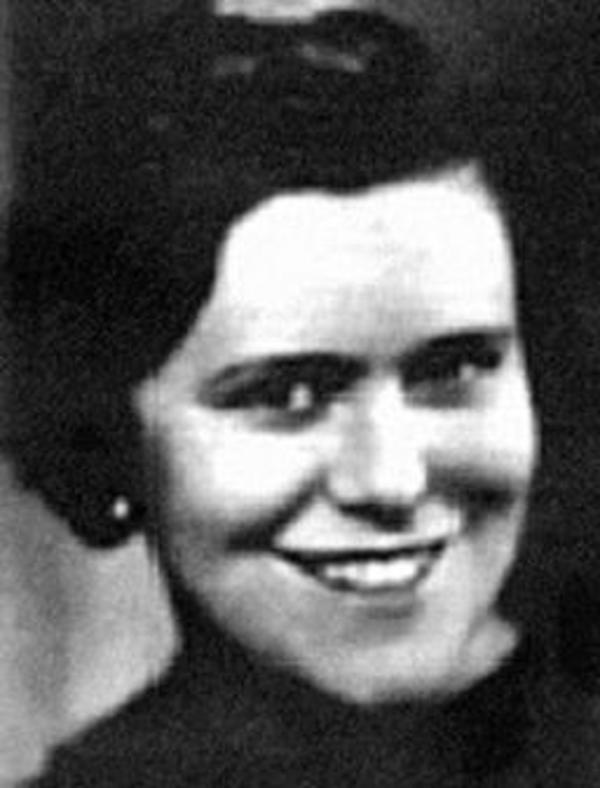 On December 4, 1957, Else Frenkl-Brunswik (1908-1958) was unanimously voted by the faculty for a professorship, due to take effect on July 1, 1958. As the wife of psychology faculty member Egon Brunswik (hired in 1937), she had been denied an appointment because of nepotism rules within departments or fields. This practice emerged in many states in the 1930’s to preclude bias and prevent states from funding two salaries to the same family. At Berkeley, it was applied only to faculty membership. Frenkl-Brunswik served as a research psychologist and was hired as a lecturer in 1944. Her subsequent appointment to the professor ranks was made possible only because of Brunswik’s tragic death by suicide in 1955, in response to an illness. This noted psychologist, a Viennese refugee who had fled the Nazis, also took her own life in her fiftieth year on March 31, 1958, just months before the appointment was to take place. It was written that Frenkl-Brunswik suffered despair over the death of her husband and the role of gender in hampering her career (see her accomplishments noted later in this essay).
On December 4, 1957, Else Frenkl-Brunswik (1908-1958) was unanimously voted by the faculty for a professorship, due to take effect on July 1, 1958. As the wife of psychology faculty member Egon Brunswik (hired in 1937), she had been denied an appointment because of nepotism rules within departments or fields. This practice emerged in many states in the 1930’s to preclude bias and prevent states from funding two salaries to the same family. At Berkeley, it was applied only to faculty membership. Frenkl-Brunswik served as a research psychologist and was hired as a lecturer in 1944. Her subsequent appointment to the professor ranks was made possible only because of Brunswik’s tragic death by suicide in 1955, in response to an illness. This noted psychologist, a Viennese refugee who had fled the Nazis, also took her own life in her fiftieth year on March 31, 1958, just months before the appointment was to take place. It was written that Frenkl-Brunswik suffered despair over the death of her husband and the role of gender in hampering her career (see her accomplishments noted later in this essay).
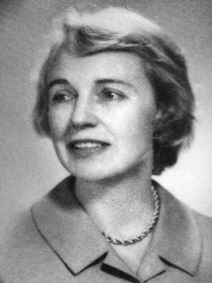 In 1962, Catherine Landreth (1899-1995) became the third female faculty in Psychology through a transfer appointment. Like Bridgman and Macfarlane, Landreth was a Berkeley Ph.D. (1936) with her dissertation in developmental psychology directed by Harold E. Jones. She was first appointed in 1938 to a faculty position in the all-women Department of Home Economics and as of 1946, also served as a lecturer in Psychology. Home Economics, established to train women to become better wives and mothers, ultimately faced its demise in 1962. Given course records (which lists academic titles), Landreth’s transfer from Home Economics to the professorial series in Psychology most likely occurred in 1962 (rather than in 1950 as noted in other sources) and she soon retired as Professor Emerita in 1964. Landreth also served as a Director of the Nursery School of the Institute of Child Welfare (a precursor to the Child Study Center). With architect Joseph Esherick, she was pivotal in the design of the landmark Harold E. Jones Child Study Center at Berkeley (opened in 1964) to create a model play and learning environment for children that enabled both quality education and research on child development. Landreth was a pioneer who shaped the emerging field of early childhood education. Her oral history about the development of the Nursery School (1981) can be accessed through the Bancroft Library.
In 1962, Catherine Landreth (1899-1995) became the third female faculty in Psychology through a transfer appointment. Like Bridgman and Macfarlane, Landreth was a Berkeley Ph.D. (1936) with her dissertation in developmental psychology directed by Harold E. Jones. She was first appointed in 1938 to a faculty position in the all-women Department of Home Economics and as of 1946, also served as a lecturer in Psychology. Home Economics, established to train women to become better wives and mothers, ultimately faced its demise in 1962. Given course records (which lists academic titles), Landreth’s transfer from Home Economics to the professorial series in Psychology most likely occurred in 1962 (rather than in 1950 as noted in other sources) and she soon retired as Professor Emerita in 1964. Landreth also served as a Director of the Nursery School of the Institute of Child Welfare (a precursor to the Child Study Center). With architect Joseph Esherick, she was pivotal in the design of the landmark Harold E. Jones Child Study Center at Berkeley (opened in 1964) to create a model play and learning environment for children that enabled both quality education and research on child development. Landreth was a pioneer who shaped the emerging field of early childhood education. Her oral history about the development of the Nursery School (1981) can be accessed through the Bancroft Library.
During this 47-year dry period, however, a cohort of female psychologists of great renown was hard at work as researchers at two campus organized research units (ORU’s): The Institute for Child Welfare (1927, later the Institute for Human Development [IHD]) and the Institute for Personality Assessment Research (1949, later the Institute for Personality and Social Research [IPSR]). Many of these women also served as instructors or lecturers in Psychology but were overlooked for senate faculty appointments. Given university rules, they were, in large part, treated as second class citizens, although they were pivotal in building the international reputation of these institutes. Faculty appointments were out of reach, due to nepotism rules, bias, and perhaps, hiring goals. Further, their research appointments did not allow them to serve as principal investigators on their own grants or to chair the dissertations of graduate students.
Among many exceptional scholars at these institutes, we acknowledge eight of these women psychologists (identified as leaders in their fields) as representing an important part of psychology’s history at Berkeley during this era (1924-71). Five of them appeared on a list that Professor Stephen Glickman (former chair and teacher of the history of psychology course) passed on to Weinstein, as evidence of honored female psychologists that our department had overlooked. We list them by year of appointment at IHD or IPSR.
1927: Mary Cover Jones (1896-1987), IHD, was recognized as “the mother of behavior therapy” for her early work on the desensitization of the fear response in young children (as in the famous case of Peter) and also for her research on the Oakland Growth Study (in collaboration with her husband, psychology faculty member Harold E. Jones, and her IHD colleague, Nancy Bayley) which contributed rich understandings of the development of personality across the life span.
1928: Nancy Bayley (1899-1994), IHD, was recognized for pioneering contributions as an initiator of the famous Berkeley Growth Study and the creator of the Bayley Scales of Mental and Motor Development, used worldwide as standardized measures of infant development.
1936: Marjorie Pyles Honzik (1908-2003), IHD, was known for ground-breaking studies of intellectual and behavioral development over the life span, among the first to demonstrate gender differences in the environmental factors associated with mental growth over time.
1939: Else Frenkel-Brunswik (1908-1958), IHD, was best known for her contributions to the classic book The Authoritarian Personality (1950), co-authored with, among others, the critical theorist Theodor W. Adorno, and for the first study of anti-semitism and out-group prejudice to find a link between childrearing practices, character structure, and personality.
Read about Else Frenkel-Brunswik
1952: Dorothy Eichorn (1924-2018), IHD, was a noted developmental psychologist and an esteemed organizational leader, evident in her two-decade leadership of the Society for Research in Child Development, which grew enormously in size, international scope, and intellectual contributions under her watch.
1957: Ravenna Helson (1925-2020), IPSR, has been described as a “pioneer in the study of women’s lives” for the Mills Longitudinal Study, in which she tracked women’s development from young adulthood to old age, and in other work where she explored gender and creativity, at a time when most of psychology treated men as the only scientifically interesting subject matter.
1960: Diana Baumrind (1927-2018), IHD, was a pioneer in research on the effects of parenting styles on children’s development—internationally known for delineating between authoritarian, permissive, and authoritative patterns of child socialization.
1965: Jeanne Humphrey Block (1923-1981), IHD, was internationally known for contributions to the understanding of sex role development in cross-cultural context and the role of ego-control and ego-resiliency in the organization of behavior, the latter work in collaboration with her husband psychology faculty member Jack Block.
Working as shadow faculty, these female psychologists (three of whom were our own graduates: Honzik, Helson, and Baumrind) were widely recognized and won major awards.
Nancy Bayley was the first woman to receive the Distinguished Scientific Contribution Award from the American Psychological Association in 1966, its highest honor, and went on to receive the Gold Medal Award for lifetime contributions in 1982. The biographies of Bayley, Block, Frenkl-Brunswik, and Helson were included in O’Connell and Russo’s 1990 book “Women in Psychology” as leading historical contributors to the advancement of psychological science. Five of these women, along with Jean Macfarlane, were recognized by G. Stanley Hall Awards for Distinguished Contributions to Developmental Psychology from the American Psychological Association (Division 7): Mary Cover Jones (1968); Nancy Bayley (1971); Jean Macfarlane (1972); Marjorie Honzik (1983); Diana Baumrind (1988); and Jean Humphrey Block (1990). Among many honors, Ravenna Helson was named the 2017 Society for Personality and Social Research Legacy Honoree for lifetime contributions to the field.
Some were disheartened by how nepotism and bias (for example, the automatic assumption that men deserve more credit than women in any collaborative work) had limited their careers whereas others welcomed the freedom that came with a research appointment. Mary Cover Jones, for whom strict nepotism rules had precluded appointment in Psychology, was finally appointed Assistant Professor of Education in 1952, at the age of 56. Diana Baumrind was quoted as saying that the research pathway offered her the flexible hours that as a divorced mother she needed in order to raise her three daughters. In the early 1970’s, when the federal Office of Civil Rights was investigating UC for discrimination against women and identified Marjorie Honzik as a case example, Honzik chose to keep her name out of public view to shield her privacy.
Years later, the Psychology Department, with Stephen Glickman as Chair, voted to appoint Jeanne Block (1979) and Ravenna Helson (1980) as the first Adjunct Professors of Psychology—in the words of Professor Jack Block, “a belated recognition” of significant research contributions. While not used before in Psychology and not accompanied by tenure, salary, benefits, or the right to vote on new appointments, this academic title mirrors the academic standards of the tenure-track professorial series—an important honor and opportunity for greater inclusion. Collectively, the research programs of these eight women influenced generations of our students. Had they had secured tenure-track faculty appointments, the Psychology Department might have looked very different then and perhaps even today.
ACADEMIC PIONEERS OF THE 1970’S: A SECOND WAVE OF FEMINISM
The title for this section is drawn from “The Academic Pioneers” oral history project, conducted by Emeriti Professors Christina Maslach (Psychology) and Paula Fass (History). The project, currently underway, was designed to understand the experience of a wide range of women faculty who came to Berkeley in the 1970’s, the first period where women joined the faculty in significant numbers after this historic low point in the 1960’s, and its results will appear in forthcoming articles and a book.
In 1963, Psychology moved into the new Tolman Hall, a building shared with the Graduate School of Education. By the mid-1960’s, the psychology faculty numbered 42 members. With the retirements of Bridgman (1956), Macfarlane (1961), and Landreth (1964), there were no women represented in its faculty ranks.
This pattern mirrored a similar decline in tenure-track female faculty in the university at large: In 1930, women were 10% of the faculty, but by 1968, their numbers had dwindled to 3.6%. Campus historian for the 150 Years of Women celebration, Professor Catherine Gallagher (2020) calls this the “rise and decline of the first wave of women faculty,” suggesting that the shrinkage was due both to a “de-gendering” of the fields that women had established and also to “the failure to hire women in the more traditional academic fields” between 1939 and 1969 (talk given at the Women’s Faculty Club, October 2020).
The two factors identified by Gallagher as pivotal in this decline can also be seen in the history of the Psychology Department. The more applied programs in clinical and developmental psychology (first established by women, such as Olga Bridgman and Jean Macfarlane) went on to add males to the faculty ranks. Females, though, were less likely to be hired in the more mainstream subfields of psychology. Other factors played a role, such as nepotism rules (which prioritized the males in the marriage) and a mismatch between perceptions of women’s interests (seen as the softer sciences) and the intellectual priorities of the discipline at the time, which were oriented around experiments and basic psychological processes. Biases were also at play, as recalled by Professor Emeritus Donald A. Riley: the belief that the few women hired were sufficient, that “qualified women could not be found,” and that women would not be as dedicated. Ironically, despite these beliefs, the department continued to train a substantial number of female Ph.D.’s.
Hired in 1964, Professor Emeritus Dan Slobin reflected in a brief essay on attitudes toward women in the Psychology Department during this period of the mid- to late-1960’s, culminating in the breaking of the glass ceiling. He remembers being told that although a woman may be qualified, she could not be relied on to follow a lifetime commitment, given the need to raise a family. That is, the Department couldn’t afford to invest in someone who might not run the course.
Ultimately, it took the activism of the late 1960’s and 1970’s—civil rights legislation that outlawed sex discrimination, the recognition of unfair nepotism rules and gender bias, and affirmative action—to secure six female faculty appointments in Psychology (five new and one transfer positions) during the 1970’s.
Susan Ervin-Tripp (1927-2018) was a pivotal campus activist on behalf of women. She first served as a visiting professor in Psychology in 1958-1959, was then hired (as ladder-rank faculty) in the Department of Speech (now Rhetoric), and ultimately, after 16 years, returned to Psychology in 1975 as a full professor—thanks to the efforts of fellow psycholinguist and psychology professor Dan Slobin, among others. In her 1995 paper, Women Activists of the Seventies: Multiple Routes to Affirmative Action, given at the History of UC Women Conference and sponsored by the Center for Studies in Higher Education, Ervin-Tripp wrote: “Women on the faculty were a vanishing species … then we decided to try to do something about it!”
Ervin-Tripp described the three strategic and simultaneous pathways that they used. First, a newly organized Women’s Faculty Group (later the Association for Academic Women) took the “Inside Route,” working through Senate committees, departments, and the administration. This led to the infamous 1970 Academic Senate Subcommittee Report on the Status of Women on the Berkeley Campus (written by Professors Elizabeth Colson [Anthropology], Elizabeth Scott [Statistics], Susan Ervin-Tripp [Speech], Herbert Blumer [Sociology] and Frank Newman [Law]), which documented the drop in female faculty hires, gender disparities in salary, and the absence of women in administration.
Second and third, a subset of female faculty formed the League of Academic Women and pursued both the “Government Route” by filing a civil rights complaint to the Department of Justice and the “Legal Route” through a class action suit under federal and state anti-discrimination laws. All of this data-driven advocacy forced dramatic and sustained change at Berkeley. It paved the way for 1) affirmative action in hiring; 2) a permanent Academic Senate committee called SWEM [Status of Women and Ethnic Minorities] formed in 1971; and 3) two new positions, Academic Assistant for Affirmative Action and Academic Assistant for the Status of Women, both reporting to the Vice Chancellor. For more about this period of activism, see also Amanda Golbeck’s 2017 book Equivalence: Elizabeth L. Scott at Berkeley.
With the advent of affirmative action, faculty hiring shifted from recruitment via male-dominated personal networks to the open advertising of positions (inviting women and minorities to apply) and to the monitoring of availability statistics, hiring targets, and hiring progress. The recruitment letter of Sept 5, 1972 for the clinical program search in Psychology read: “We have a clear interest in candidates who are women or who are members of ethnic minorities.”
In Psychology, the six female faculty of the 1970’s presented below—hired/transferred on the cusp of the 1970 Academic Senate report and the beginnings of affirmative action— spanned the fields of social, cognitive, developmental, and clinical/community psychology. The first four of these hires entered as the sole female faculty in their subdisciplines in the department. Emerita professors as of this writing, they went on to illustrious careers, achieving significant honors and impact, despite the obstacles of that time. Listed alphabetically by year of hire, they include:
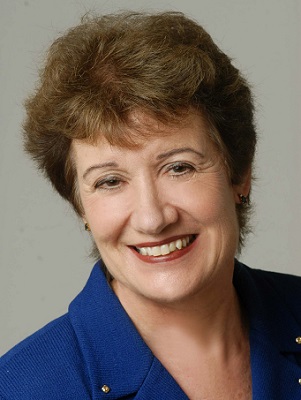 1971: Christina Maslach is best known for her pioneering research on job burnout, including creating the standard assessment tool for job burnout (the Maslach Burnout Inventory, MBI), as well as for her books and award-winning articles. The impact of her work is reflected by the official recognition of burnout, as an occupational phenomenon with health consequences, by the World Health Organization in 2019.
1971: Christina Maslach is best known for her pioneering research on job burnout, including creating the standard assessment tool for job burnout (the Maslach Burnout Inventory, MBI), as well as for her books and award-winning articles. The impact of her work is reflected by the official recognition of burnout, as an occupational phenomenon with health consequences, by the World Health Organization in 2019.
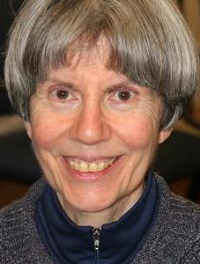
1971: Eleanor Rosch is known for her visionary work on how the mind organizes and structures information about the world (mental categorization and prototypes)—fueling research across a wide range of academic fields, such as cognitive science, anthropology, philosophy, logic, computer science, theoretical biology, and critical theory. Her work in Eastern thought, reflected in the classic 1991 book The Embodied Mind (co-authored with Francisco J. Varela and Evan Thompson, revised edition, 2017) was among the first to explore the connection between science and Buddhist practices.

1973: Mary Main is an internationally known leader in the field of attachment. She is noted for the introduction of the "disorganized" attachment classification, the creation of the Adult Attachment Interview (AAI), and for major contributions to the understanding of intergenerational factors in attachment—with her papers to be housed at the Wellcome Trust in London.
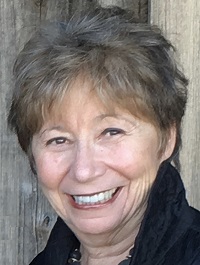
1973: Rhona S. Weinstein is recognized for award-winning research on self-fulfilling prophecies—illuminating the perceptions of children (as mediators of the strength of teacher expectancy effects) and the contextual features of classrooms and schools that promote positive prophecies. Captured in two books, Reaching Higher: The Power of Expectations in Schooling (2002) and Achieving College Dreams (co-edited with Frank Worrell, 2016) are evidence-based visions for educational equity, actualized in the partnered-creation of CAL Prep, an early college secondary school for “first generation college youth” which opened in 2005.
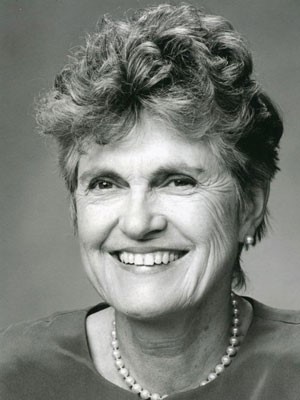
1975: Susan Ervin-Tripp (1927-2018) was a founding leader in the emerging fields of psycholinguistics and sociolinguistics. She was engaged in path-breaking research in child language, bilingualism, and the application of new technology (computer analysis of tape and video recordings) to the study of everyday communication, especially multi-party discourse within social contexts and gender roles.
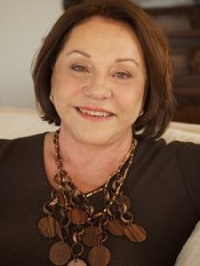 1977: Charlan Nemeth is recognized for her research on influence processes in small group decision making. Her focus has been on how minority positions persuade and how exposure to dissenting opinions, even when wrong, stimulates more divergent thought, better decisions, and more creative problem solving. This new approach, exemplified in her 2018 book, In Defense of Troublemakers, has shaped research on the dynamics of influence, with the results widely acclaimed and utilized in business, law—and life.
1977: Charlan Nemeth is recognized for her research on influence processes in small group decision making. Her focus has been on how minority positions persuade and how exposure to dissenting opinions, even when wrong, stimulates more divergent thought, better decisions, and more creative problem solving. This new approach, exemplified in her 2018 book, In Defense of Troublemakers, has shaped research on the dynamics of influence, with the results widely acclaimed and utilized in business, law—and life.
During this time (the early 1970’s), Psychology was a highly divisive department. Faculty were members of one of three groups (Group 1: clinical, personality, developmental; Group 2: experimental; and Group 3: general), in part reflecting friendship patterns rather than subfield, and each with its own graduate student admissions procedure and independent determination of faculty recruitment and hiring. Also contributing to the divisiveness was a string of six faculty terminations (five tenure rejections and one resignation) that wiped out industrial and organizational psychology as a program, with only Sheldon Zedeck remaining. Fortunately, by 1974, Department Chair Geoffrey Keppel (1972-1977) proved successful in forging a more coherent and cohesive department, by eliminating the three-group structure and re-organizing around substantive program areas.
The integration of this new cohort of female faculty into the department was not smooth sailing for some. The list of obstacles that women faced included biased beliefs (about women’s intelligence and commitment), the collision between the biological clock and mid-career/tenure decisions, the absence of child-bearing leaves, limited access to information about the tenure process, and lack of transparency in faculty review.
To learn more about the early experiences of our academic pioneers in the Psychology Department, we asked them to contribute brief essays, presented below. To learn more about the late Susan Ervin-Tripp’s experiences at Berkeley, we provide a link to her oral history and also note that an extensive archive of her activism (letters and reports) is housed in the Bancroft Library, ripe for analysis.
READ MORE ON BRIEF ESSAYS BY:
Maslach Rosch Main Weinstein Ervin-Tripp Nemeth
A number of these women joined Susan Ervin-Tripp in activism. Weinstein, the first faculty pregnancy in the department (with no maternity leave at the time), was accorded the first “stop the tenure clock (two years for twins)” as an exception to the rule in 1977, when she went over the heads of both department chair and dean to successfully appeal for extra time to Vice Chancellor Michael Heyman. Over the years, Ervin-Tripp and Maslach were to serve as chair of SWEM and Weinstein and Nemeth as members of this important Senate committee. Among the policies forged were accommodations for children (parental leave for childbearing, modified duties, and stop the clock), salary equity studies and remedies (including career reviews), and greater transparency in reviews (through access to content of redacted letters and the opportunity for candidate rebuttal).
A critical factor in Berkeley’s development of accommodative and more equitable practices was the decision to offer these opportunities to men as well as to women, embrace a talent development approach, and hold all accountable for what had been viewed as “gender work.” Maslach later held an appointment as Faculty Assistant for Women (now called Vice Provost for the Faculty, in the Office of Faculty Equity and Welfare) and Ervin-Tripp became a campus ombudsperson. Maslach’s activism helped open up membership on the important Budget Committee (where appointments, advancements, and tenure decisions are made) and enabled greater fairness in the reviews of female faculty.
Under the auspices of SWEM, Weinstein and Ervin-Tripp collaborated in revising a 1978 document (first penned by Ervin-Tripp) called “Advancement and Promotion at UC Berkeley” (here, the 2011 version). First issued anonymously in 1983, and updated many times, it made explicit the professional development tasks critical to tenure preparation and the resources available. This implicit curriculum was typically shared by the largely male faculty in the men’s room, the poker games, and over beer—a world to which female faculty had no access. Weinstein was chastised in a meeting with the then all-male Budget Committee, whose members argued that the document cheapened the meaning of tenure, unfairly advantaged women, and must be destroyed. Ultimately, this document was used to prepare all junior faculty for tenure and was even posted on the web until recently. Of interest, the section entitled “The Need for Further Change,” which argued that we must work actively to change the career constraints for women, was deleted. Years later, Weinstein was appointed to a more gender-diverse Budget Committee (1995-1997).
Many men also played an important role in furthering the success of women in the department and on campus. As one example, Department Chair Stephen Glickman (1977-1982) was exceptionally supportive in the tenure cases of a number of these pioneer women and spearheaded the successful effort to grant the first adjunct professor appointments in Psychology to Jeanne Block (1979) and Ravenna Helson (1980), noted earlier. As a second example, Psychology Professor Sheldon Zedeck, as Chair of the Senate Privilege and Tenure Committee (1986-1989), led deliberations on the fairness of tenure decisions. In one infamous case, this resulted in an outside comparative review and an overturned denial—a model process used as an exemplar.
Susan Ervin-Tripp remained a steadfast leader and “nudge” around issues of gender equity in the department and campus until her death in 2018. She concluded her infamous 1995 paper with this statement: “How can we tell when the job is done? When the Academic Senate and the top administrators look similar to a sixth-grade class, we can know we have arrived.” This target goal was ultimately to be achieved with regard to gender in Psychology during her lifetime, but less so in some other fields on campus, especially the STEM disciplines.
LATE 20th AND EARLY 21ST CENTURY FEMALE PSYCHOLOGISTS
Across the five decades from 1970 to 2020, as a result of sustained activism of women and some men, and new policies in place, the percentage of female faculty rose from 0% to 47% (17/36) of the Psychology Department, with their presence and enormous accomplishments evident in every subfield. Women’s representation in typically male-dominated subfields of psychology also witnessed a large boost, with substantial hiring of women in the cognition, cognitive neuroscience, and behavioral neuroscience areas. In considering this era, we describe the greater representation of women among the faculty, the shifting approaches to dual career couples, the first female department chairs, and the Women’s Faculty Forum.
With one glass ceiling broken (the hire of the 1970’s women), a total of 28 women were subsequently appointed in the Psychology Department—25 as senate faculty and 3 as adjunct faculty. The department grew its use of adjunct faculty appointments (both female and male), in two cases enabling a spouse (female and male) who met the academic standards in psychology to be recognized more appropriately for research and teaching contributions. Given the number of female hires, our discussion focuses not on their scholarship but on some firsts reflected in their appointments and the obstacles in diversity that remain.
The 1980’s welcomed four female appointments: Professors Barbara Mellers (1981-1995), Karen DeValois (1982-2008), Anne Treisman (1986-1993), and Alison Gopnik (1988-present).
The 1990’s added three female appointments: Professors Lucia Jacobs (1993-present), Lisa Capps (1997-2000), and Ann Kring (1999-present). Also, with a greater receptivity to the use of the adjunct professor series, the department was enriched with the appointment of Lynn Robertson (1998-2013) and Carolyn Cowan (1999-2005) as Adjunct Professors.
Since 2000, the department grew with the addition of 18 female Senate faculty, including Serena Chen (2000), Ozlem Ayduk (2002), Lori Markson (2002), Allison Harvey (2004), Joni Wallis (2003), Carla Hudson Cam (2004), Darlene Francis (2005), Tania Lombrozo (2006), Qing Zhou (2006), Silvia Bunge (2006), Sheri Johnson (2008), Sonia Bishop (2008), Fei Xu (2009), Iris Mauss (2011), Linda Wilbrecht (2013), Anne Collins (2016), Celeste Kidd (2018), and Arianne Eason (2019). Nina Dronkers also joined the department as an Adjunct Professor in 2020.
While affirmative action in higher education—dismantled by the UC Regents in 1995 and by the state of California in 1996 with the passage of Proposition 209—had helped the hiring of female faculty, it did not do as much for faculty of color. This was true in Psychology, especially for women of color, despite their presence as graduate students and despite the earlier appointment of Professor Enrico Jones in 1974, which led the way for greater ethnic diversity in male faculty appointments. The early 2000’s were noteworthy for women’s history in psychology because the department finally welcomed its first Asian-American female faculty member, Serena Chen (2001), its first First Nations-African female faculty member Darlene Francis (2005, now at the School of Public Health), followed 14 years later by hiring of African-American female faculty member, Arianne Eason (2019). Even with this progress, minority representation among psychology faculty remains profoundly low.
One persistent stumbling block up until the 2000’s had been the mismatch of the research interests and methods of underrepresented minority scholars with the hiring priorities of traditional departments—a mismatch that had also been a historical concern regarding female scholars. Administrative efforts to shift the academic culture included the 2005 UC systemwide addition to the faculty evaluation criteria (APM-210) to recognize contributions to equity and diversity in research, teaching, and service, and the celebration of such accomplishments with annual awards, such as those established by Chancellor Birgeneau (2004-13) on the Berkeley campus. Also, the UC Berkeley Initiative for Equity, Inclusion, and Diversity (supported by the Evelyn and Walter Haas, Jr. Fund in 2010), created the Othering & Belonging Research Institute with eight endowed professorial chairs at its core—importantly, hired outside of traditional department searches and focused on topics of disparities, equity, and inclusion.
Beyond the gaps in diversity, controversy continued to divide the department around how to handle the problem of psychologist couples, even with nepotism rules no longer in play. Until the late 1990’s, being in a dual-career relationship in academia was treated as a woman’s problem. As we have seen, it was almost always the female member of a couple who was positioned in the “spouse” role and often delegated to research appointments within the campus ORU’s and/or offered instructor or lecturer opportunities within the department. While bias may have interfered with how women’s contributions were evaluated relative to men, there were also fierce debates about the future direction of the department at that time period, favoring breadth over depth of coverage, which worked against couples who collaborated within the same subfield.
A number of these appointments in the late 20th century illustrate the tensions raised by dual career couples. After a decade spent as an independent principal investigator in the laboratory of her husband and sometimes collaborator Professor Russell DeValois, Karen DeValois became an Associate Professor in 1982—an appointment achieved only with the offer of an additional FTE from Optometry. Thus, Russ and Karen De Valois became the first couple in Psychology to share one tenured faculty position, each appointed halftime in Psychology and Optometry. The second couple, Professors Barbara Mellers and Philip Tetlock, married while members of the department—each holding their own faculty slot. The policy mechanism of a “target of opportunity” appointment helped bring a third couple (two senior appointments) to Psychology in 1986, Anne Treisman and Daniel Kahneman. In 1999, Carolyn Cowan (spouse and research collaborator of Professor Philip Cowan) was appointed as adjunct faculty to recognize her contributions. However, a number of other proposed spousal/partner appointments failed to be approved during these years; two male faculty members left over these denials whereas several male faculty members chose to remain.
As the number of female faculty on campus grew, the campus, with leadership of key administrators including Mary Ann Mason (the first female Dean of the Graduate Division), Sheldon Zedeck (Vice Provost for Academic Affairs and Faculty Welfare), and Angelica Stacy (Associate Vice Provost for the Faculty), developed family-friendly policies (for childcare and housing) and generated a partner policy and institutional mechanisms for hiring couples. These structural changes reflected and reinforced shifts in faculty norms and culture already underway. For both men and women, the Psychology Department looked very different during this era—with marriage/partnership and children in full view, better work-family balance was achieved for females as well as males.
With more women being interviewed and offered positions in the department in the 2000s, it was not uncommon for them to have partners who were also in academia, such that dual-career couples became an even more pervasive issue that involved both men and women as spouses. The department welcomed its fourth dual-career couple, Ozlem Ayduk and Rodolfo Mendoza-Denton, in 2002. This was the first couple appointment at the tenure-track assistant professor level. Two more junior dual-career couple hires followed, Tania Lombrozo and Tom Griffiths (2006), and Celeste Kidd and Steven Piantidosi (2018), all with two FTE appointments.
Despite the remarkable growth in female faculty, there were many unfortunate losses of women from the department. Some of these losses were due to spousal hire issues, where a second position could not be found (Markson, Hudson Cam). Other losses were due to better offers from other universities (Mellers, Treisman, Lombrozo), and one who moved to the School of Public Health at Berkeley (Francis).
A poignant loss was the premature death of a gifted and much-loved young female faculty member Lisa Margarit Capps, at age 35 of lung cancer, after three years in our department (1997-2000). Hired to span clinical and developmental psychology, Capps conducted pioneering research in psychopathology—marrying linguistics, discourse analysis, and narrative—to illuminate strengths that had been hidden in children with autism and to study the intergenerational transmission of anxiety disorders, among many other topics. Her In-Memoriam statement noted that “her blend of creativity and caring will not pass this way again soon.”
The glass ceiling in administrative leadership was finally broken with the appointment of the Department’s first female chair, to be followed by two more female chairs. It took 76 years after the birth of the Psychology Department at Berkeley to appoint the first female department chair, Karen DeValois (1998-2003). Her chair role was ironic given the hard battle to win her faculty appointment. K. DeValois, internationally known for the development of an advanced and highly influential multi-stage model of color information-processing in the visual system, also became chair of the campus Budget Committee (1995-96). As Psychology Chair, she proactively supported the work of all faculty and importantly, women, and led with wisdom, calm, and generosity. Her campus and professional service was legendary, and she was known by her motto that “If I am needed, I will happily serve.”
Second female Chair Ann Kring (2015-2020), internationally respected for her ground-breaking work on emotion and schizophrenia, handled a department external review, supported women vigorously, took a major role in the design of a new building, showed her organizational prowess with the move from Tolman Hall to Berkeley Way West, and provided a calm and steady voice during the first months of the COVID pandemic.
Serena Chen became the third female chair (2020-present). Chen, with her widely recognized work on self, identity and power in a cultural context, provided optimism and persevered as we faced the chronicity of the pandemic and remote work, and again showed consistent commitment to ethnic diversity and to women.
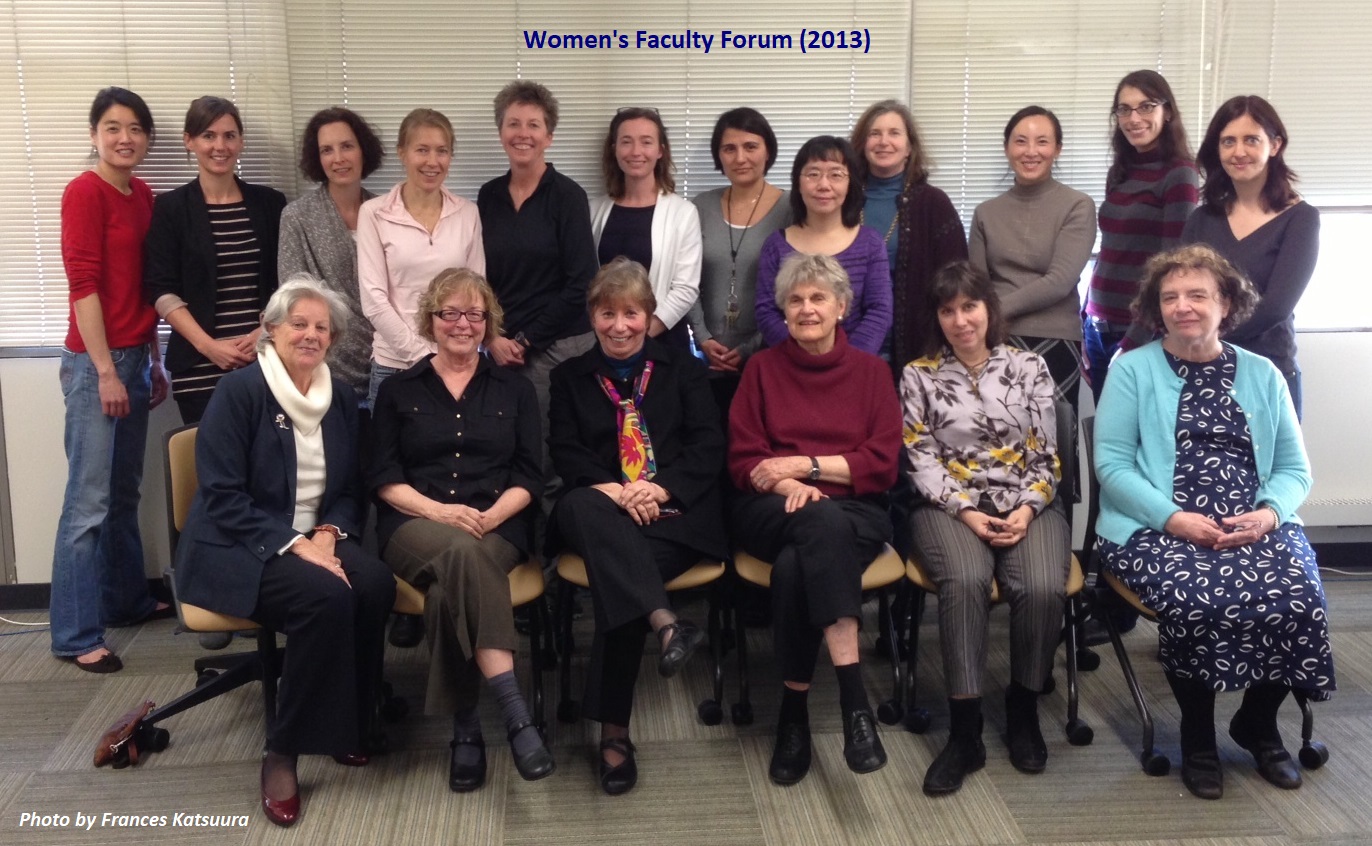
Front row left to right: Carolyn Cowan, Lynn Robertson, Rhona Weinstein, Susan Ervin-Tripp, Alison Gopnik, Mary Main.
Several members of the WFF not present.
During this era, progress was made beyond female department chairs. In 2013, in response to unmet needs around gender equity, the Women’s Faculty Forum (WFF) in Psychology was formed, consisting of active and emerita faculty and initiated by faculty member Silvia Bunge. This effort built a community of women scientists—creating the room where it happens, to borrow the phrase from the musical Hamilton. With rotating leadership, including the now Chair Serena Chen and Vice Chair Ayduk, and among many accomplishments, this committee succeeded in lobbying for a faster timeline for a new psychology building. The WFF took on activities such as meeting with structural engineer and seismic experts to review the poor earthquake safety of Tolman Hall, presenting these results to the department, organizing a signature drive to provide a state appropriation for building replacement, and meeting with the Chancellor and other key officials. Their actions hastened the construction of the new Berkeley Way West building for Psychology, Education, and Public Health, which opened in 2018.
In 2014, the WFF also successfully lobbied the Chair to clarify the departmental policy on ASMD (Active Service Modified Duties, APM 760-28) for birth mothers as vagueness in the former policy could disadvantage those who were not adept negotiators. The new leave policy more concretely defined a standard for 2-semester leave and clear expectations for work and relief from responsibilities for birth mothers and 1-semester leave for adopted mothers and fathers. The committee also became aware that women tended to ask for fewer perks than did men, and so requested then Chair Rich Ivry to share publicly the types of resources available—creating a more transparent and equitable system for their distribution. Additionally, the committee sponsored a series of faculty-graduate student events around work life balance/parenting in academia and explored issues of sexual harassment and bullying.
Mirroring national trends, gender equity in salaries continued to be a point of contention. 45 years after the 1970 Academic Senate Report on the Status of Women had exposed the problem, the university released a Faculty Salary Equity report in 2015, of special concern to us. The report showed that gender disparity in the Psychology Department was among the worst on campus and more than twice the disparity shown across most other departments, with a 9.7% disparity between the logarithmic mean of men and women’s salaries in psychology that was not accounted for by area of study (neuroscience), years since degree, or citations (p. 43). On average, the mean 9-month salary was lower for women by $27,607 among Full professors, and $13,358 for Associate Professors. Led by then Chair Ann Kring as a true advocate, the WFF lobbied successfully for Targeted Decoupling Initiative (TDI) awards to be dispensed to be targeted toward departments with the most egregious disparities.
As the WFF engaged the department in discussion of these issues, there was growing recognition that many of the community-oriented issues should be spearheaded across genders, which led to the formation of the departmental Climate and Equity committee. In 2020, this committee divided so as to support the formation of a separate Diversity, Equity, and Inclusion committee (currently co-chaired by Professors Arianne Eason and Mahesh Srinivasan) and a Community Building and Cohesion committee (currently co-chaired by Professors Sheri Johnson and Anne Collins).
Looking across this history, we see remarkable progress, albeit with some serious zigzags: the first appointments of women on both sides of the 1920’s, the absence of a single new female tenure-track faculty appointment for the 47 years from 1924 through 1971, to a place where 47% of the faculty in the department are women. Beyond the head counts, the activism of the pioneers paid off, as women won a vote and a seat at the table and emerged as leaders in the department and the university. Along the way, the culture of the department shifted, from a place where women felt compelled to choose between family and career, to one with policy and goals of allowing men and women to balance career with relationships and family. Not only did the department benefit from the ground-breaking science of the women faculty members, but those women also shaped the field of psychology, introducing new topics, goals, and techniques to the science.
THE FUTURE
Berkeley has made great strides in gender equity of the faculty. Nonetheless, a recent review paper spearheaded by a UC Berkeley Psychology Ph.D. program alumna (June Gruber, a 2009 Ph.D. alum) with collaboration from multiple female faculty members at Berkeley highlights the disparities in the academic opportunities for men and women (Gruber et al., 2020).
Some issues are pernicious across disciplines. Across academic disciplines, women’s work is cited at 76% the rate of men’s work, they hold only one-third of the grants from the National Institute of Health, and women tenured professors earn about 90% of what men do (NSF, National Center for Science and Engineering Statistics, 2018). Disparities appear to emerge early in training. Gruber and colleagues note, for example, that women are less likely, relative to men, to get a response to email requests for future meetings with professors (Milkman, Akinola, & Chugh, 2012, 2015), and 61.9% of women undergraduate students report receiving inappropriate, sexual, or insulting comments. Academia also has struggled with how to promote opportunities that are sensitive to family planning. Across academia, married women are less likely than married men to enter a tenure-track job (Wolfinger, Mason, & Goulden, 2008), and married women with young children are less likely than men with young children to obtain a tenure-track job within six years after receiving a Ph.D. (Ginther & Kahn, 2014). Sadly, COVID has only increased gender disparities, as women academics have faced more burdens in childcare with school closures than have men.
Psychology is not immune to these problems. Within psychology, although women are much more likely to complete Ph.D.’s, they remain underrepresented in the ranks of full professors, receive less than one-third of the APA or APS senior-investigator awards, and are less likely to be invited to give keynote addresses. Other barriers to women’s career development are well-documented in psychology. As one example, the Society for Personality and Social Psychology (SPSP) reported that 28% of women, as compared to 5% of men, reported experiencing sexual harassment at an SPSP event during their careers (see SPSP Sexual Harassment Task Force Report, 2019).
We hardly need note that issues of diversity in psychology remain of deep concern. As has been said before, “Even the rat in experiments was white and male.” A truly diverse psychological science would represent a diversity in its researchers, its subject population, its questions, and its methods. A core goal for the future of psychology will be to allow for a more enriched focus on how meaningful variation across individuals and across social settings can be integrated into our science. This work will require the engagement of scientists who represent the full diversity of our society.
We see enormous potential for Berkeley to be an ongoing leader in recognizing and addressing these systemic barriers and issues that continue to hinder women’s careers. With three recent female chairs in a history of 21 chairs (14%), Berkeley’s Psychology Department is fortunate to have equal numbers of male and female professors (even at the full professor level), to lead the nation in family-friendly leave policies, and to have many examples of mothers who are thriving in their careers. Many of our women faculty members have received prestigious awards, high levels of citations, and frequent invitations for keynote presentations. Recent chairs have provided full support for addressing each and every example of bullying or harassment brought to their attention. With this type of progress, we hope to see Berkeley continue to be a leader in awareness of gender gaps and in the design of solutions for addressing them, striving also for greater diversity.
June 2021
Rhona S. Weinstein, Ozlem Ayduk, and Sheri L. Johnson
With thanks to Emeriti Professors Dan Slobin and Sheldon Zedeck, Chair Serena Chen, for their helpful comments on a previous version; Academic Personnel Coordinator Jitka Horavova for her help with research, and Software Engineer Morteza Faraji for his help with website programming.